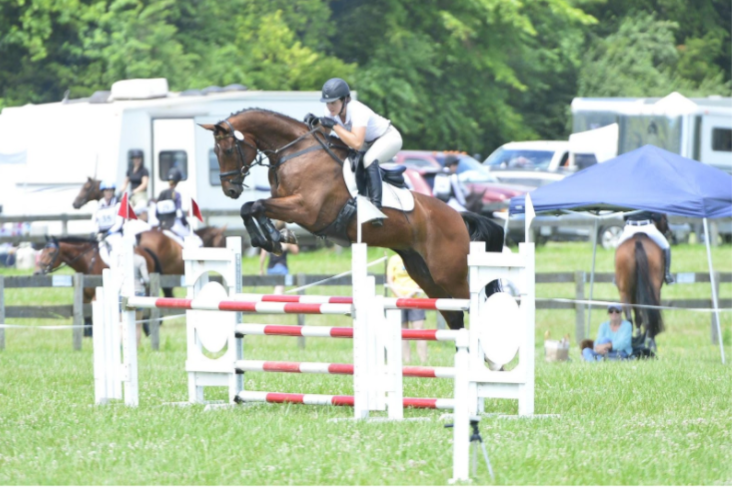When I first started eventing, I remember being in awe when at my local events, there were Olympians riding around the same courses that I was doing. Of course, the five-star riders were on their green 4 year old horses and I was on my pony—but we were doing the same course, and that made me feel, well, cool!
Of course, at the biggest FEI events you won’t have a 12 year old kid going Novice while the big name riders go Advanced — but at many eventing shows, these levels do run concurrently. It is an amazing thing for the kids and adult amateurs to feel like they are part of a community which includes the best riders in the country (and the world).
 Photo by Ema Klugman.
Photo by Ema Klugman.
You don’t get that in show jumping quite as much. Anyone can go watch a big show, but not everyone can compete at the same show as the top riders. This is partly due to sheer financial limitations—even to enter the 1.0m division at a show like WEF costs an arm and a leg. Kids from less-than-wealthy backgrounds have little chance of showing at these places, unless they get spotted by a well-known trainer and have an owner who wants them to catch ride. Even then, they will probably have to miss school and may not have access to expensive tutors. It’s just not possible for a lot of people.
What I describe in the eventing example is wonderful access to in-person inspiration. An initiative in show jumping could achieve this as well. Perhaps a sponsor could fund a program for kids from around the country to attend and watch big horse shows like Devon, WEF, Harrisburg, and Old Salem. They could even shadow a rider at the show to watch them warm up and help out in the barn. It doesn’t sound like much, but an experience like this could change a kid’s life.
On top of that, perhaps more local shows need to step up and provide better competition without the high expense of “A” shows. Many local shows are volunteer-run and made possible by the generosity of hardworking organizers and farm owners. However, lots of them top out at 1.0m or 1.10m. What if course designers did some pro-bono work to support these local shows and added bigger or more challenging classes? This would attract more professional riders and allow people to compete at a lower cost. They could still be local shows and simply run on weekends.
Efforts to improve accessibility to the sport not only help include everyone who wants to participate—they also help develop stars of the future who may not have the financial backing to get to the top horse shows on their own.
Editor’s Note: While there are excellent programs that do exist such as the USHJA Emerging Athletes Program, spots are competitive and extremely limited. USHJA grants also exist but are limited.
